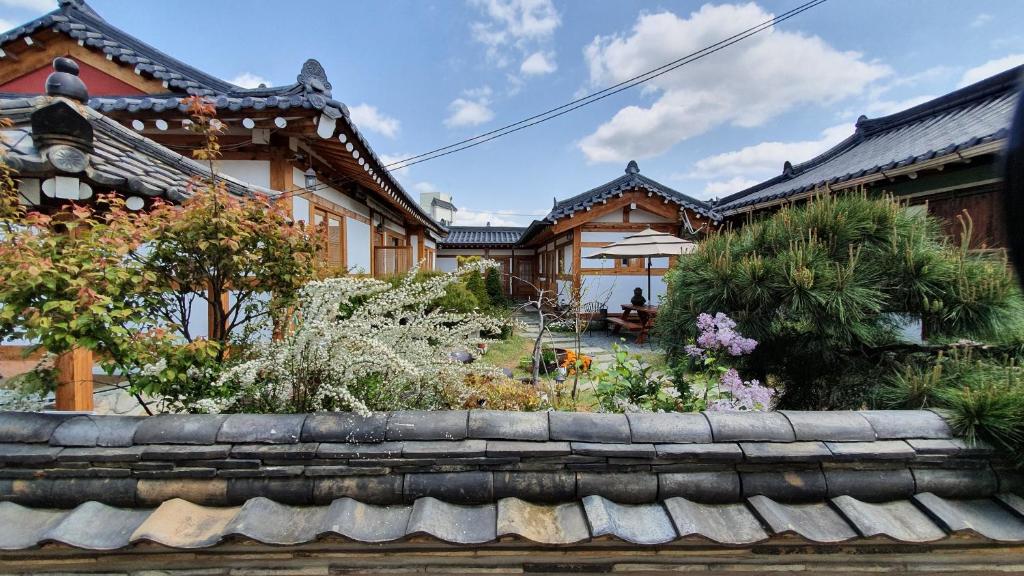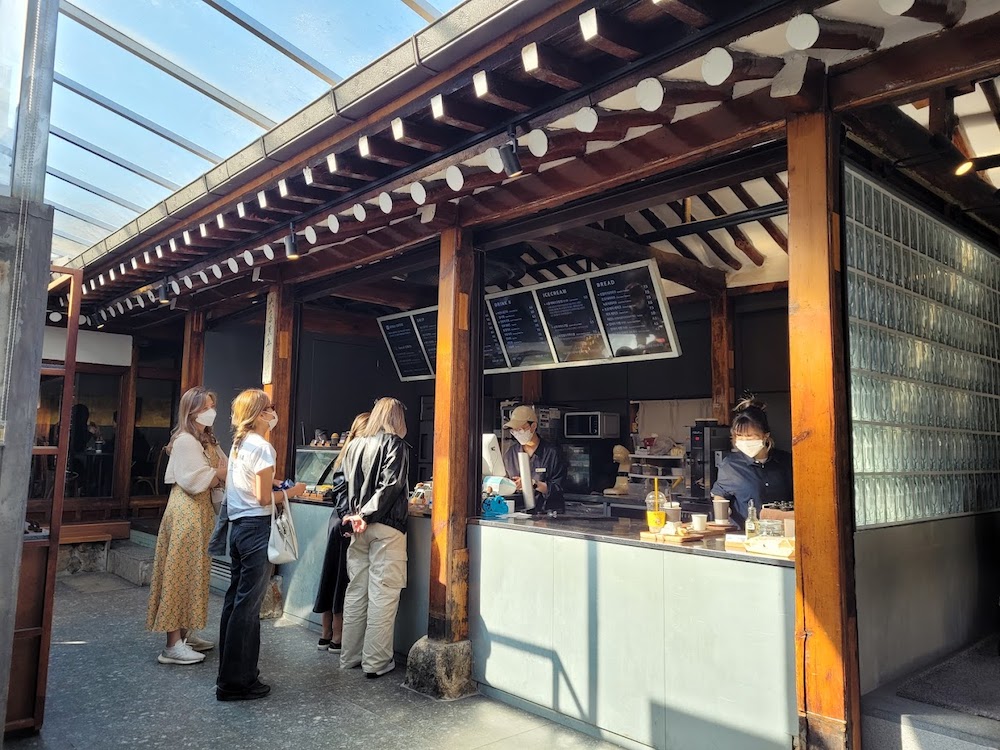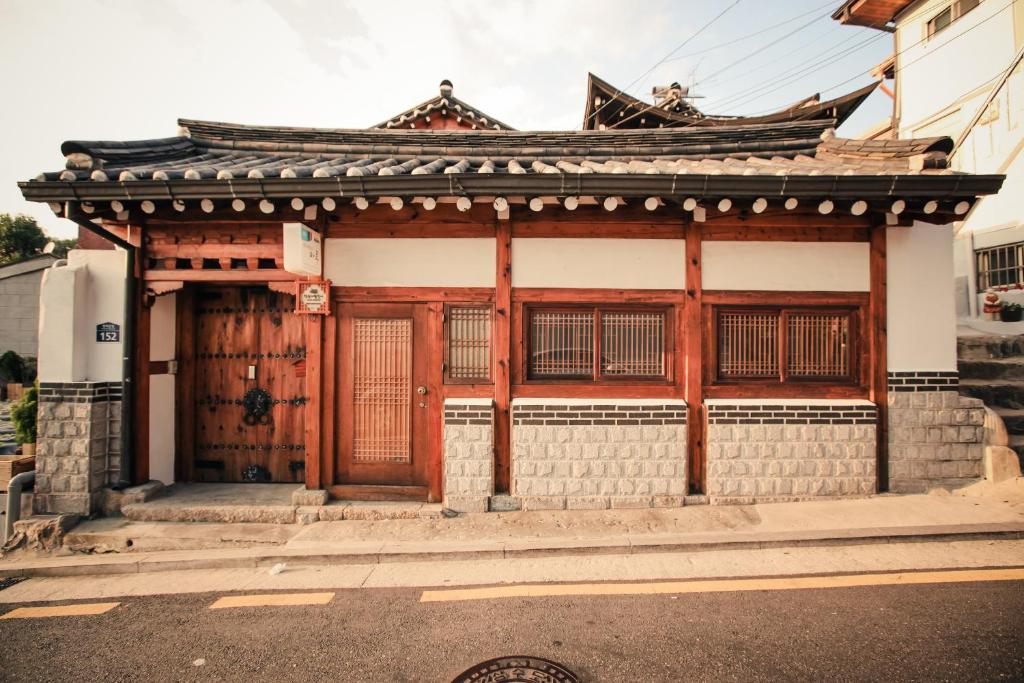Have you ever watched a historical K-Drama and wondered about why the houses look so different? Or maybe you’ve been to Korea yourself and been amazed by the beautiful ancient structures?
These houses are called hanok. With a long and colorful history and some pretty amazing qualities, these traditional houses have remained in Korea for centuries. Sit back, relax, and let us tell you all you need to know about these eye-catching homes!
What is a Hanok?

A hanok is a type of Korean traditional housing. They were first built in the 14th Century and many of these structures still remain to this day.
Made from raw and sustainable materials such as soil, timber, and rock, hanok are very eco-friendly houses. Perhaps their most distinctive characteristic is the tiled roof that they all have, called giwa. They also have beautifully decorated windows and doors made from traditional Korean paper and bean oil to make them waterproof and polished.
What’s also interesting about hanok is the way they are positioned in the community. Traditional Korean architecture follows the principle of baesanimsu, which states that the ideal house is built with a mountain at the back and a river at the front.

While most hanok look pretty similar, the designs actually vary depending on the region. In the colder northern areas of Korea, they are positioned in a square shape with a courtyard in the middle. This is done to retain heat better during the chilly winter months.
On the other hand, hanok in the warmer southern areas are more open and L-shaped. This design allows more open airflow to combat the summer heat.
History of Hanok

Hanok have a long history in Korea. The first ones were built back in the 14th Century during the Joseon Dynasty. While styles vary depending on region and period, most of them are characterized by their distinct roof tiles made from fired clay.
In the aftermath of the Korean War, many hanok were demolished to make way for cheaper and more sustainable housing. But now that Korea has become more economically stable again, many hanok sites have been reconstructed to become tourist spots.

In the past, Korean hanok were built to provide dwelling and a sense of community for the residents. They were also more adapted to the natural and cultural environment at the time. But in the 21st Century, hanok have also evolved.
They are now more suited to accommodate a wide variety of functions, including public and private events. Many of them have also become commercial establishments as well as residential ones. Modern hanok also have more creative designs and modern-day features to help guests be more comfortable.
Where to find Hanok houses today?

Because they have become an important cultural asset in Korea, hanok can be found all over the country. From the historical village of Jeonju in the south, to the beautiful and interactive hanok communities of Gyeonggi in the north, you can find them just about anywhere in Korea.
Even the bustling metropolitan city of Seoul has a lot of these hidden traditional gems! Bukchon Hanok Village and Eunpyeong Hanok Village are just some of the places you can visit if you want to see hanok without having to travel out of the city.
Hanok villages also often have restaurants, shops, teahouses, and museums built in the traditional design. Many have been transformed into full-blown tourist spots that will surely transport you back in time and make you feel like you’re in the Joseon Era.
To find out more, go check out our post on The Best Hanok Villages in South Korea.
Can you stay in a Hanok in Korea?

Now that you’ve learned all about the amazing features and history of the hanok, we’re sure you’re curious about whether or not you can actually stay in a hanok!
Lucky for you, Korea has a lot of hanok stays for you to choose from! Staying at a hanok will give you a unique traveling experience that you can’t get anywhere else. You’ll definitely gain a better appreciation for Korean history and culture.

Aside from being an educational experience, staying at a hanok is good for your peace of mind. The beautiful scenery and quiet way of life will really help you sit back and relax.
We’ve compiled a list of the best hanok villages you can stay at! From Seoul, Gyeongju, and all the way to Jeonju, make sure to check out our posts to get the best Korean traditional stay experience:
- Best Hanok Stay In Korea
- Best Hanok Stay In Seoul
- Best Hanok Stay In Gyeongju
- Best Hanok Stay In Jeonju
Heating System In A Hanok

If you’re planning on staying at a hanok, especially during the winter season, you’re probably worried about the heating situation. Older houses tend to be more unreliable when it comes to heating during winter.
But they actually have amazing built-in heating systems! It’s called ondol, a traditional floor-based heating system that helps keep hanok warm and comfortable during the coldest winter nights.
Ondol is a sophisticated underfloor heating system that has been used for centuries. It works by harnessing the heat from the fireplace to warm up the house. Rather than getting heat directly from the fire, this technique allows the heat to spread more evenly throughout the whole home.
If you’re planning on taking a vacation at a hanok, you don’t have to worry about the heat at all!
Read More: Discover Ondol, The Korean Traditional Heating System
Hanok Etiquette – The Dos and Don’ts

If you’re planning on staying in a hanok, remember that it’s quite different from the regular hotel or guesthouse. We’ve compiled just a few tips to help make your stay as respectful as possible!
1. Do Not Make Too Much Noise

Many people choose to stay in a hanok to rest and heal their souls. To really enjoy the peaceful environment of this Korean traditional house, make sure to maintain the quiet as much as possible.
Use your “indoor voice” and avoid using loudspeakers or microphones to be respectful of the other guests.
2. Do Not Litter

It should go without saying that littering is a big no when visiting a hanok! They are important cultural sites that need to be maintained and preserved. Make sure to take your trash with you when you can.
Guests must leave the house as clean as when they first arrived.
3. Do Not Peer Into Open Windows

Some hanok have open windows especially during warmer seasons, but this doesn’t mean you can look inside them! Be respectful of other guests’ and residents’ privacy and avoid looking into open windows if you can.
4. Do Be Careful Of Fires

Most traditional hanok are built using flammable materials such as wood. Because of this, it can be very dangerous to start a fire indoors. Always make sure to ask for permission from the owner first before trying to make a fire.
5. Be Respectful

The last and most important rule is to always be respectful. Many hanok stays in Korea have been around for hundreds of years, so it is important to consider that when staying in one.
Guests should be careful not to take home or damage any of the cultural items inside the house. It is also important for guests to do their part in maintaining the hanok so that it can last for an even longer time.
For more general rules about how to behave in Korea, feel free to read our article about Korean Etiquette.
—
What did you think? Are you now excited to stay in a hanok? Let us know in the comments!
Hanok are not just beautiful houses. They also have a long history and have become an important cultural landmark in Korea.
If you liked learning about this piece of Korean tradition and culture, check out our post about the best books about Korea and Jjimjilbang (Korean Traditional Bathhouse)!

